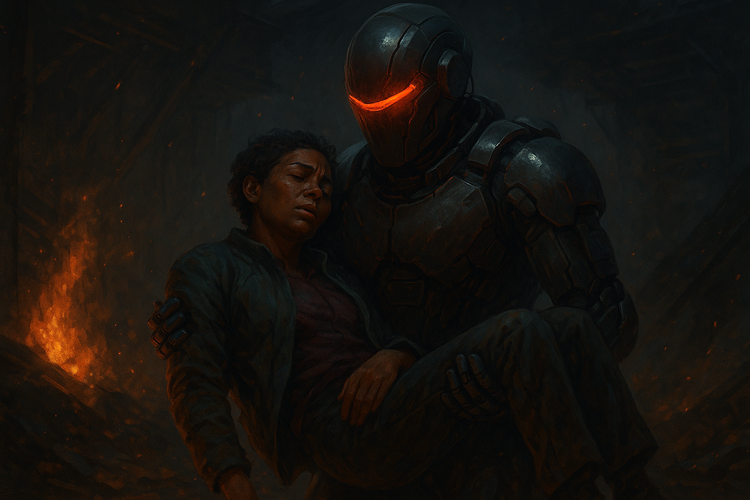Murderbot | S1E2: "Eye Contact"

Spoiler Warning: This reflection discusses key details from Murderbot Season 1, Episode 2: “Eye Contact.” Proceed thoughtfully if you haven’t yet watched the episode.
In “Eye Contact,” Murderbot confronts a particularly unsettling challenge: forced intimacy through sustained eye contact. Gurathin, whose analytical suspicion recalls the detached scrutiny of a mentat, pushes Murderbot into this uncomfortable closeness, fully aware of the discomfort it causes. Murderbot’s understated comment, “It was so, so bad,” captures the genuine distress of being seen against one’s will.
This moment illuminates a universal vulnerability—the discomfort of emotional exposure when our inner selves become visible to another. Murderbot’s candid reflection, “I don’t know what it’s like to not be me,” emphasizes the fundamental solitude inherent in personal experience, highlighting the difficulty of truly sharing one’s internal reality.
Murderbot’s resistance to eye contact is more than mere awkwardness; it is a deliberate emotional defense, safeguarding its fragile autonomy and boundaries. Gurathin’s demand to remove Murderbot’s mask further deepens this vulnerability. The mask serves both as literal protection and as a symbol of Murderbot’s emotional defenses. Its removal not only exposes Murderbot to scrutiny but also risks revealing a critical secret: the bypassing of its governor module, which is supposed to control its actions.
Significantly, Murderbot’s anxiety in this forced intimacy reveals something quietly profound: it feels. Its discomfort and fear are genuine emotional responses, clear indicators of real sentience. Gurathin’s behavior underscores a troubling contradiction: while acknowledging, almost dismissively, that AI constructs are considered citizens in his home world—a status Murderbot explicitly lacks—he simultaneously treats Murderbot as less than fully autonomous. Gurathin operates comfortably within legalities and technicalities, rather than from any universal moral or ethical conviction about constructs. Here, Murderbot is considered property, and Gurathin’s actions reflect this harsh reality.
Yet Gurathin’s suspicion is not without merit. His instincts about Murderbot’s lack of control are accurate, driven by a legitimate desire to protect his team from potential harm. Complicating the situation further are Murderbot’s fragmented memories, hints of past violence that could justify Gurathin’s fears. These memories introduce genuine uncertainty, deepening the moral complexity.
The tangible consequences of Gurathin’s mistrust soon become clear. By insisting Murderbot remain behind during a critical survey, Gurathin inadvertently places the team at significant risk. Without Murderbot’s protective presence, the group narrowly avoids disaster, emphasizing Murderbot’s crucial role in their collective safety. The subsequent grim discovery of another survey team’s habitat—its human members dead and their SecUnit destroyed—further underscores the stakes of excluding Murderbot, raising pressing questions about trust, control, and the nuanced value of autonomy and sentience.
In “Eye Contact,” the delicate balance between trust, autonomy, and vulnerability comes vividly into focus. The uneasy dance between Gurathin’s protective skepticism and Murderbot’s guarded emotional authenticity invites reflection on our own subtle interactions: the boundaries we set, the fears we conceal, and the difficult trust we grant—or withhold. This episode thoughtfully challenges viewers to consider how recognition of sentience and emotional depth might reshape our relationships, not just with artificial constructs, but with each other.



Comments ()